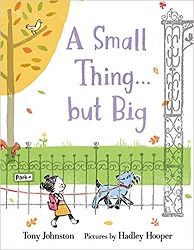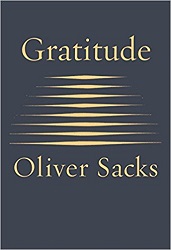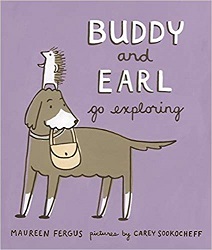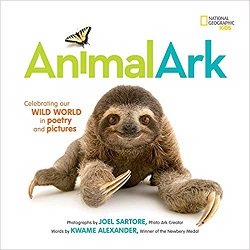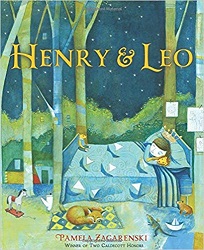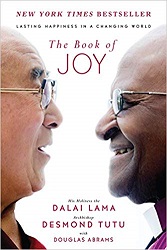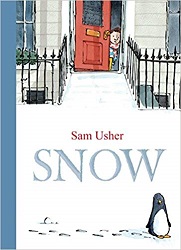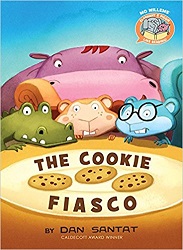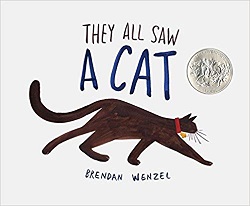Review of A Small Thing . . . but Big, by Tony Johnston, pictures by Hadley Hooper
but Big
by Tony Johnston
pictures by Hadley Hooper
A Neal Porter Book (Roaring Brook Press), 2016. 40 pages.
Starred Review
This is a quiet picture book with a gentle story — and utterly charming. I was scared of dogs when I was a kid, so I relate to Lizzie.
The book opens, with Lizzie walking into the park with her mother. The park reminds me of parks in Paris, with an ironwork fence and a fountain and flowers. She begins exuberant play — until she comes close to a dog, being walked by an old man.
The pace is leisurely, and the language is delightful. This covers several pages toward the beginning:
“Do not be worried,” said the old man of the dog timidly.
“Does she bark?” asked Lizzie with worry anyway.
“Not at little children,” said the old man.
“Does she bite?” asked Lizzie anxiously.
“Only her food,” said the old man, a bit anxious also, but with sparkle.
“Go ahead, give Cecile a pat.”
Feeling reassured, carefully, oh carefully, Lizzie patted Cecile.
Cecile sat soft and still. She seemed to enjoy those pattings.
“I patted a dog,” Lizzie said quietly.
“A small thing, but big,” said the old man, quietly too.
“Shall we walk Cecile?” he ventured in his quiet way.
Lizzie felt uneasy.
“Do not be worried,” said the old man. “Cecile will adore walking with a child.”
“She is quite adoring being with you,” the old man said shyly.
“How springingly she walks.”
Lizzie walked springingly too.
It continues, with progressively more steps that are small things, but big.
The artwork is what puts this book over the top. They’re in one park the whole book, so you might think it would be lacking in variety. But we get different angles and different scenes in each spread, and wonderful close-ups on Lizzie and on Cecile. I love where they are shown walking springingly, for example.
Lizzie’s face and bearing slowly gain confidence and joy as the book progresses.
The overall effect is light and airy and makes you feel like going for a walk in the park.
So lovely!
Find this review on Sonderbooks at: www.sonderbooks.com/Picture_Books/small_thing_but_big.html
Disclosure: I am an Amazon Affiliate, and will earn a small percentage if you order a book on Amazon after clicking through from my site.
Source: This review is based on a library book from Fairfax County Public Library.
Disclaimer: I am a professional librarian, but I maintain my website and blogs on my own time. The views expressed are solely my own, and in no way represent the official views of my employer or of any committee or group of which I am part.
What did you think of this book?
